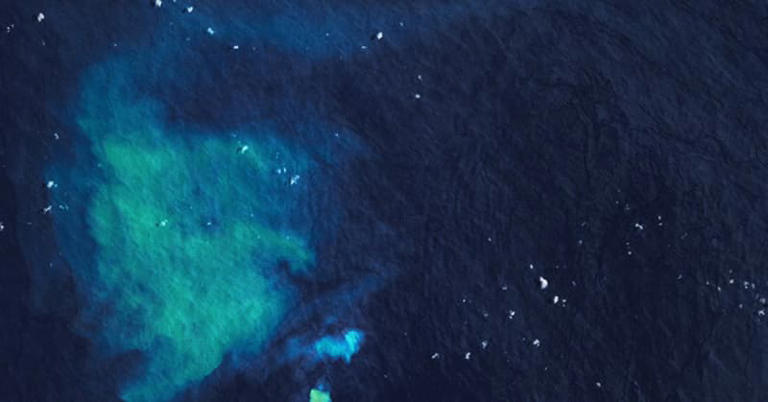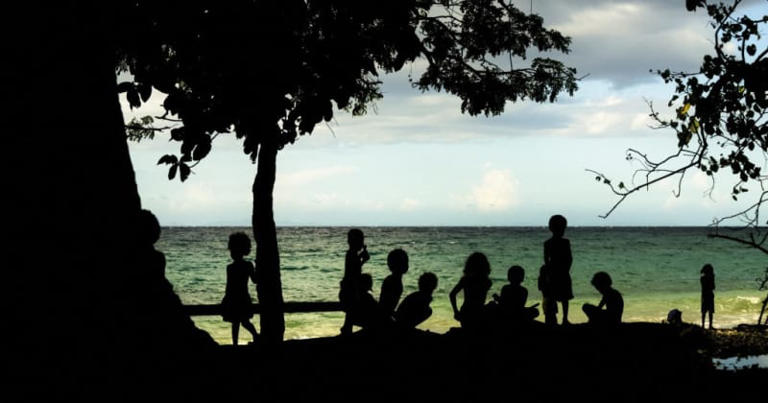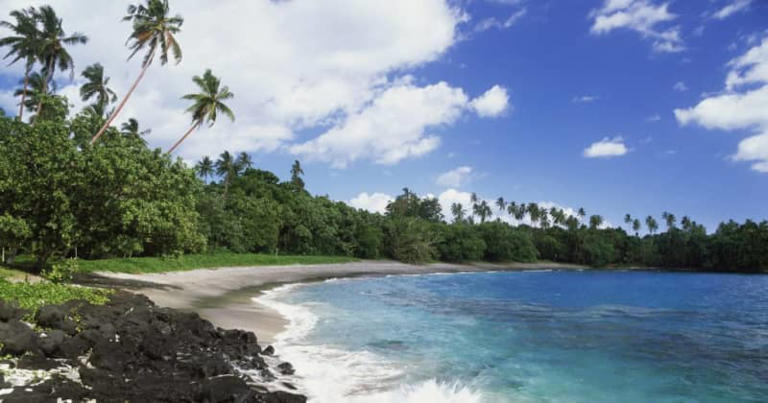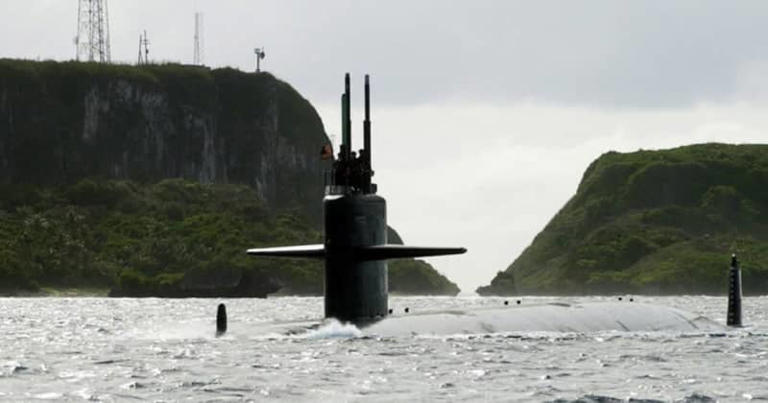Story by Richard Burkard • 1d
Knewz.com
The old phrase that “they’re not making any more land” isn’t true. Volcanoes can do it, even underwater.
Knewz.com has learned new details about a plateau in the western Pacific Ocean. It doesn’t qualify as “land” by definition, because it’s not on the surface. But it’s a ridge that’s growing in size.

A© Knewz (CA)
Scientists call it the Melanesian Border Plateau. And research being published Monday, January 15, offers to call the source of it “Oceanic Mid-Plate Superstructure.”
“An OMS constitutes a volcanic structure… that was built through multiple pulses of volcanism,” a study in the journalEarth and Planetary Science Letters says.
The plateau “contains at least 25 distinct volcanic structures,” the study based at the University of Nevada-Las Vegas adds. It admits the exact age of the structures is not known, but may have begun about 120 million years ago.
Study leader Dr. Kevin Konrad led a team of researchers in 2013 to collect rock samples from the plateau area, which is east of the Solomon Islands.


The Melanesian Border Plateau sits east of the Solomon Islands. By: MEGA© Knewz (CA)
Konrad told the Live Science website that some samples of the Pacific Ocean can appear like one massive magma event occurred.
But "sometimes when we sample these features in detail, we realize they're actually built over multiple pulses over tens of millions of years and wouldn't have significant environmental impacts,” Konrad said.
Scientists say undersea explosions are important because they could explain how creatures became extinct long ago.
They also can create scientific “hotspots,” where heated material rises from the bottom of the ocean. Scientists believe that’s how the Hawaiian islands were formed.
Konrad and his team believe that’s happening now with the Samoan Islands, after an undersea chain of mountains called a “seamount” somehow eroded and drifted over a hotspot.

A beach in Samoa. Scientists think the island chain is stIll growing due to undersea activity. By: MEGA© Knewz (CA)
The plateau that is Konrad’s focus is huge. By one measurement, its size is larger than Idaho, which is the 14th largest state.
The National Oceanographic and Atmospheric Administration is researching other hotspots and seamounts in the South Pacific.
"As we sample in more detail, we're going to find more complexity,” Konrad said.
Konrad was involved in a similar study published in October 2018. It focused on whether changes in tectonic plates below the oceans make hotspots and volcanic plumes adjust.
The Science website estimated in April 2023 that more than 19,000 new underwater volcanoes had been found around the world. That was in addition to 24,000 reported in a 2011 census.

The USS San Francisco returns to port in Guam in 2005 after hitting a seamount. By: MEGA© Knewz (CA)
But a study admitted there could be many more, as only one-fourth of the ocean floor has been mapped.
The USS San Francisco submarine collided with one of them in 2005, killing a crew member. Then the USS Connecticut struck one in the South China Sea in 2021.
The old phrase that “they’re not making any more land” isn’t true. Volcanoes can do it, even underwater.
Knewz.com has learned new details about a plateau in the western Pacific Ocean. It doesn’t qualify as “land” by definition, because it’s not on the surface. But it’s a ridge that’s growing in size.

A© Knewz (CA)
Scientists call it the Melanesian Border Plateau. And research being published Monday, January 15, offers to call the source of it “Oceanic Mid-Plate Superstructure.”
“An OMS constitutes a volcanic structure… that was built through multiple pulses of volcanism,” a study in the journalEarth and Planetary Science Letters says.
The plateau “contains at least 25 distinct volcanic structures,” the study based at the University of Nevada-Las Vegas adds. It admits the exact age of the structures is not known, but may have begun about 120 million years ago.
Study leader Dr. Kevin Konrad led a team of researchers in 2013 to collect rock samples from the plateau area, which is east of the Solomon Islands.

The Melanesian Border Plateau sits east of the Solomon Islands. By: MEGA© Knewz (CA)
Konrad told the Live Science website that some samples of the Pacific Ocean can appear like one massive magma event occurred.
But "sometimes when we sample these features in detail, we realize they're actually built over multiple pulses over tens of millions of years and wouldn't have significant environmental impacts,” Konrad said.
Scientists say undersea explosions are important because they could explain how creatures became extinct long ago.
They also can create scientific “hotspots,” where heated material rises from the bottom of the ocean. Scientists believe that’s how the Hawaiian islands were formed.
Konrad and his team believe that’s happening now with the Samoan Islands, after an undersea chain of mountains called a “seamount” somehow eroded and drifted over a hotspot.

A beach in Samoa. Scientists think the island chain is stIll growing due to undersea activity. By: MEGA© Knewz (CA)
The plateau that is Konrad’s focus is huge. By one measurement, its size is larger than Idaho, which is the 14th largest state.
The National Oceanographic and Atmospheric Administration is researching other hotspots and seamounts in the South Pacific.
"As we sample in more detail, we're going to find more complexity,” Konrad said.
Konrad was involved in a similar study published in October 2018. It focused on whether changes in tectonic plates below the oceans make hotspots and volcanic plumes adjust.
The Science website estimated in April 2023 that more than 19,000 new underwater volcanoes had been found around the world. That was in addition to 24,000 reported in a 2011 census.

The USS San Francisco returns to port in Guam in 2005 after hitting a seamount. By: MEGA© Knewz (CA)
But a study admitted there could be many more, as only one-fourth of the ocean floor has been mapped.
The USS San Francisco submarine collided with one of them in 2005, killing a crew member. Then the USS Connecticut struck one in the South China Sea in 2021.
No comments:
Post a Comment